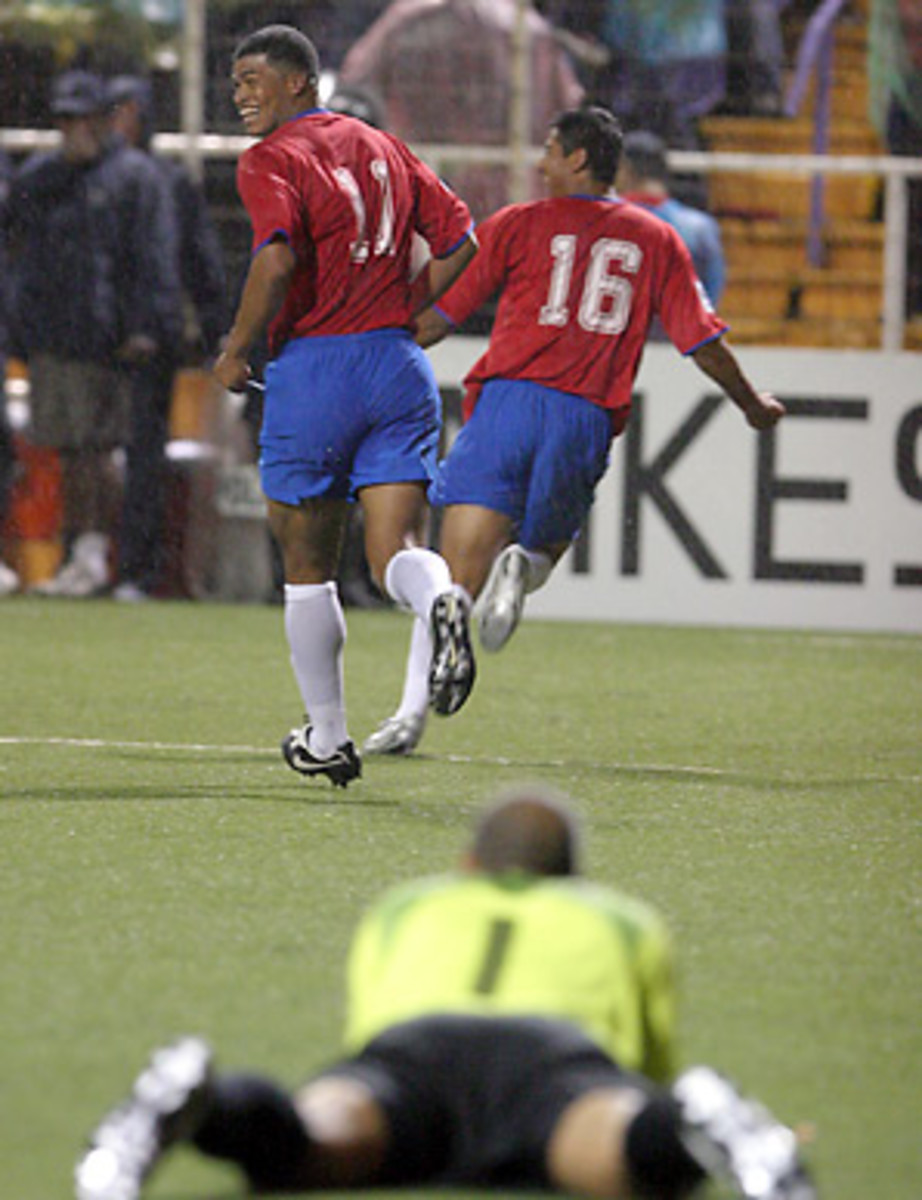The U.S.' personal house of horrors
No other field in CONCACAF throws the U.S. team into such a state -- specifically a losing one. The U.S. has never won there in six games, nor has it even gained so much as a point at any stage of World Cup qualifying. The one draw the Americans managed in Costa Rica was when they played in another stadium in nearby Alajuela. Los Ticos quickly learned to stick to their trump card, though, and all qualifying games since then have taken place at Saprissa.
Unlike Mexico City's legendary Estadio Azteca (where the U.S. actually has claimed a point in qualifying), the tremendous difficulty of getting a good result in Saprissa isn't immediately obvious. There are no smog or altitude issues, and at only 24,000 capacity, the stadium isn't even a fourth the size of the Azteca.
But Costa Rica's fervent fans turn the stands into a roiling mass of humanity that breathes down the neck of all those on the field. They chant, sing, pound drums and dance to encourage their nation along. They are also ruthless in any believed slight by the referee on close calls.
"The way the stadium is, the fans are right on top of you," said former U.S. national-team coach Bruce Arena. "That's intimidating for players, of course, but even more for officials."
Arena's vehement arguing against a handball call made by referee Peter Prendergast against defender Gregg Berhalter in 2000 led to a multiple-game suspension for the coach.
The passing of time may have mellowed Arena somewhat, as the current Galaxy coach looked back and expressed a certain understanding of the burden officials face. "In the old days, the security was nonexistent, almost," Arena said. "It was very tough to get any close call when clearly the officials didn't feel safe."
Berhalter had a similar take when he recalled the incident. "They were going nuts and the referee was a bit nervous for his life, maybe. He made up a call."
In Arena's day, the stadium actually boasted a grass field, but Costa Rica's rainy season wrecked havoc on it. "A very bad field is worse than a good turf field," said Arena. "That old field was just horrible. They'd get these late-afternoon rains and it would turn into a pit. The heat is also a factor."
The criticisms didn't end there. "The visiting locker rooms, it was as if they'd start preparing them a year in advance -- they'd be filthy," Arena continued. "I leave it to your imagination what can accumulate in that sort of environment. The smell was terrible."
Whatever juju worked up by the ardent Ticos fans has been successful. Costa Rica manhandled a rather young U.S. team in its last World Cup qualifying contest, winning 3-0 in October '05 (though the Americans already had clinched qualification for the '06 World Cup).
FIFA, however, has had to take action against overzealous fans who have thrown objects at the players during matches. Security has increased, but the incidents served to add to the legacy of the pit.
Berhalter had a few words for outsiders who insist that CONCACAF qualifying is a joke. "Go down there and play," said the Galaxy defender. "The Germans, first of all, they'd die of the heat. Second of all, the antics going on would drive them crazy. The fire alarms in the middle of the night, the radio stations blaring in front of your hotel. The 12 o'clock kickoff in the middle of July. That stuff, they wouldn't deal with that. The sandwiches, the rocks, the batteries."
Though he didn't play in the 3-0 loss, Landon Donovan did dread a return trip to Costa Rica. "Saprissa feels like the most difficult place to play." said Donovan, pointing out events off the ball. "In Salvador, they're a ways away, and even in Azteca, it is a ways away. You can feel it, you can hear the fans right there. It makes it tougher."
Costa Rica is one of only two CONCACAF countries that has a positive overall goal ratio against the U.S. It would be a tough team to compete against anywhere, let alone at the toughest venue in the region.
"They're a solid team," Donovan said. "There's pressure for them to win at home. If we get four or six points out of these next two games, we're very nearly qualified. So that's our goal in these two games.
Even though Saprissa will not suit up and take the field, the stadium itself gives Costa Rican players extra confidence. The U.S., which may have overlooked los Ticos in the past due to the constant focus on beating Mexico, now faces an opportunity to make history.
"There's a very hostile crowd and it's a difficult place to get three points," said Berhalter. "But the team's in charge right now. They're ahead of the group. This could be a chance for us to get three points."
The Azteca may get more attention as a horrific venue for visiting squads, but the record shows that Saprissa is a real beast. Donovan is ready for the challenge of winning in the legendary stadium, pointing out that young players on the U.S. team should have learned from the first few matches of qualifying, where in one game, the U.S. trailed by two goals before storming back to equalize.
"El Salvador was a good test," Donovan noted. "It was a wake-up call and now I think those guys know what to expect. It's never easy."





